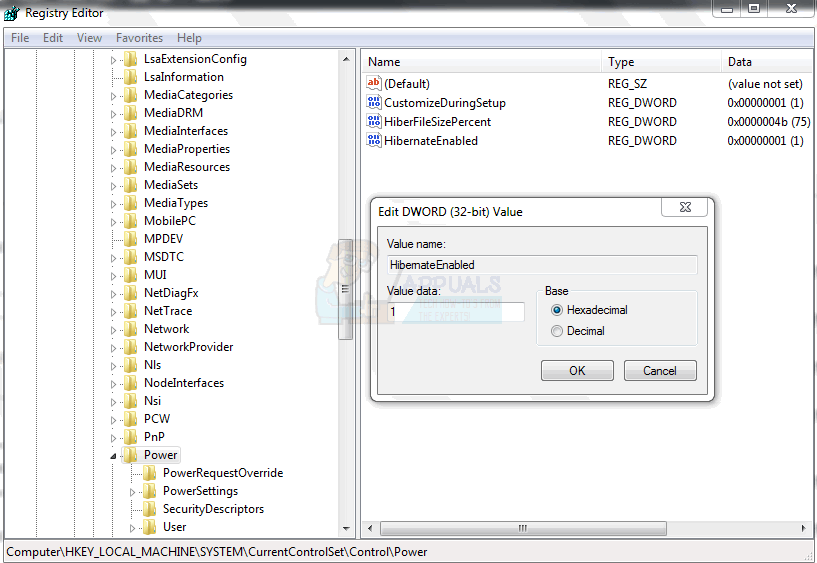Hibernation is a power-saving state designed primarily for laptops but is available for other PCs too. By default, if you leave your computer unattended for too long, it will turn off the screen and some hardware (e.g. USB, Wi-Fi) and go to sleep mode to save power. If it stays in sleep mode for too long, it will save all your data into a system file and then power down. This is the hibernation mode, and it does not need your computer to be powered anymore. Unlike the sleep mode, it will take you longer to get out of the hibernation mode, but still faster than booting the computer. The combination of the sleep mode and hibernation mode is known as hybrid sleep setting. There is a hidden system file named Hiberfil.sys located in the root folder of the drive where the operating system is installed. The Windows Kernel Power Manager reserves this file when you install Windows. The size of this file is approximately equal to how much random access memory (RAM) is installed on the computer. So if you have a 4GB RAM the Hiberfil.sys file will be between 2 and 4GB depending on the data stored in it. The computer uses the Hiberfil.sys file to store a copy of the system memory on the hard disk when the hybrid sleep setting is turned on such that everything that is loaded to the RAM will not be lost. If the Hiberfil.sys file is not present, the computer cannot hibernate. You can view if the Hiberfil.sys file is present by going to. If the hybrid sleep setting is on, you will be able to see the Hiberfil.sys file on the root of your operating system drive. It is obvious that hibernation uses a substantial amount of your hard disk space, and if you are someone that is bent on saving time, hibernating can cost you a little. So how do you disable hibernation such that your computer will never hibernate? This article describes how to disable and then re-enable hibernation on a computer that is running Windows.
Method 1: Disable and enable hibernation using command prompt
Using command prompt, we can disable hibernation. You will need an administrator account for this operation since you will have to run command prompt as an administrator.
To Disable Hibernation
From the system root, you will notice that the Hiberfil.sys file is no longer available.
To Enable Hibernation
From the system root, you will notice that the Hiberfil.sys file is now available
Method 2: Use Registry Edit to enable and disable hibernate
Method 3: Turn Hibernate On or Off in Advanced Power Options
If your PC or laptop changes power plans, you need to do this for the other plan. Laptops always switch power plans depending on whether the AC is plugged in or not. Of all the power-saving states in Windows, hibernation uses the least amount of power (virtually no power is used in this mode). On a laptop, use hibernation when you know that you won’t use your laptop for an extended period and won’t have an opportunity to charge the battery during that time. You may lose data if you make hibernation unavailable and a power loss occurs while the hybrid sleep setting is turned on. Remember, when you make hibernation unavailable, hybrid sleep does not work.
How to Disable / Enable Windows Recovery Environment on Windows 10?How to Enable or Disable ‘Find My Device’ in Windows 10?How to Enable or Disable Delete Confirmation Dialog on Windows 10?How to: Enable / Disable Data Execution Protection in Windows 10


